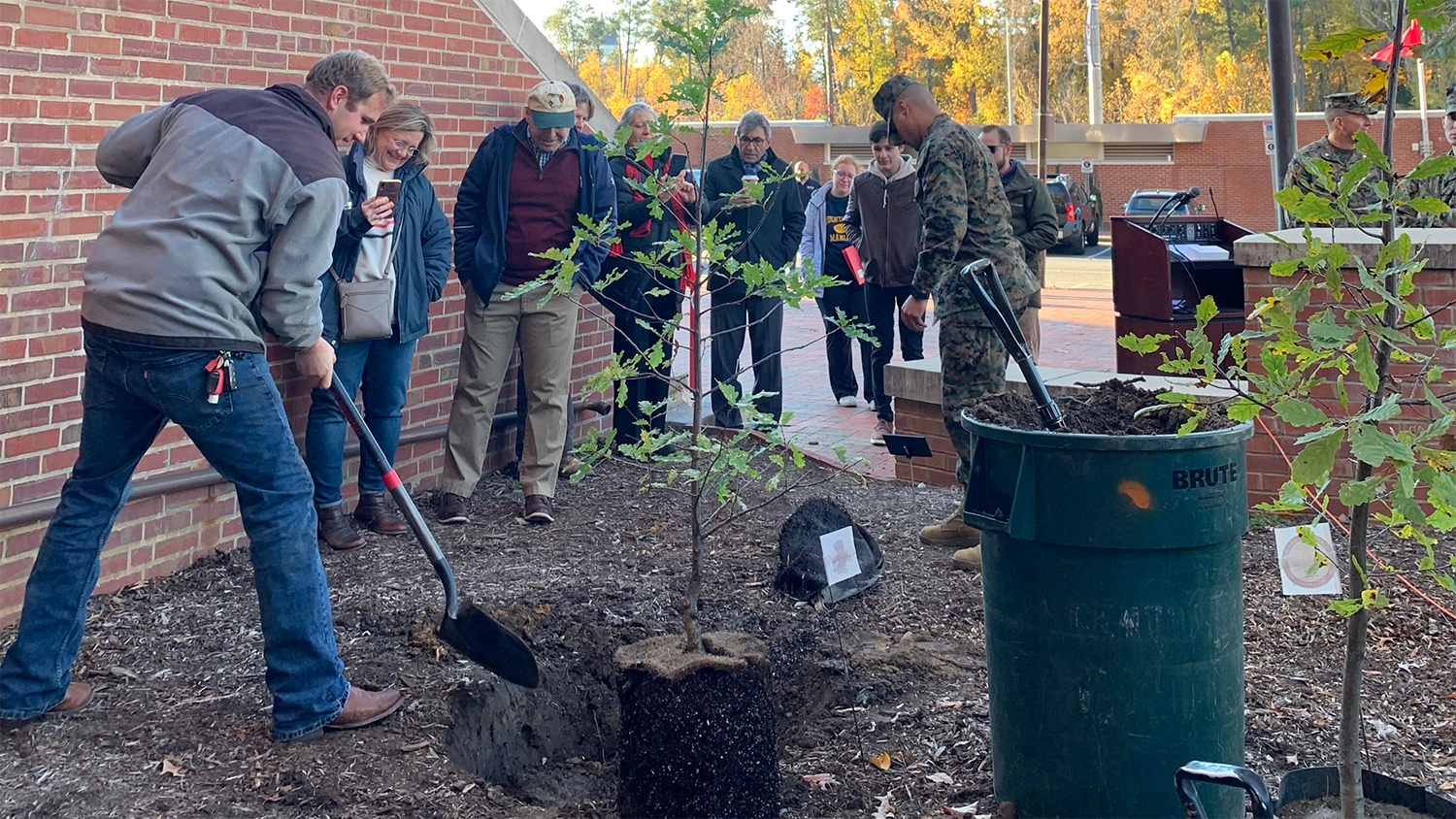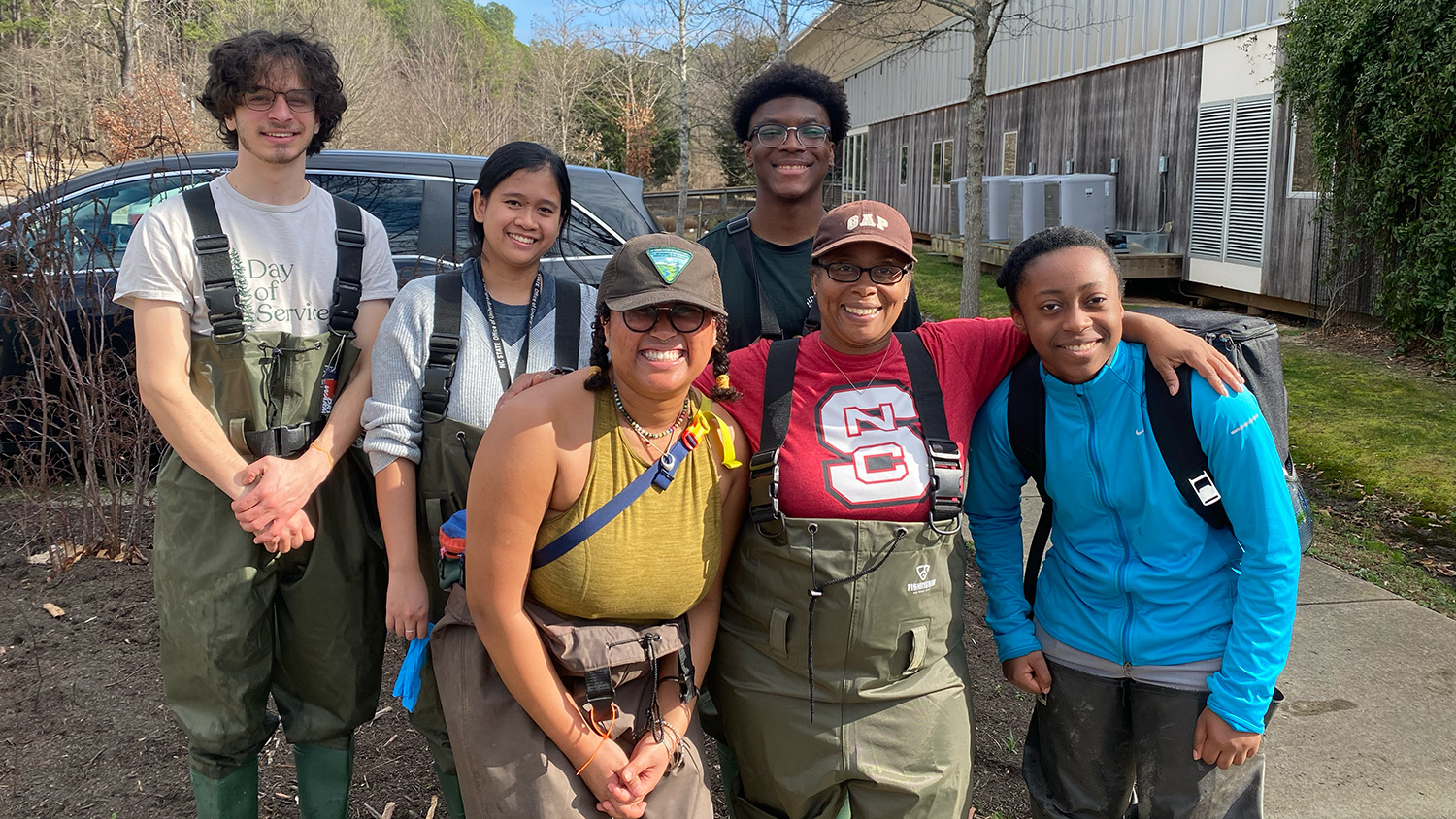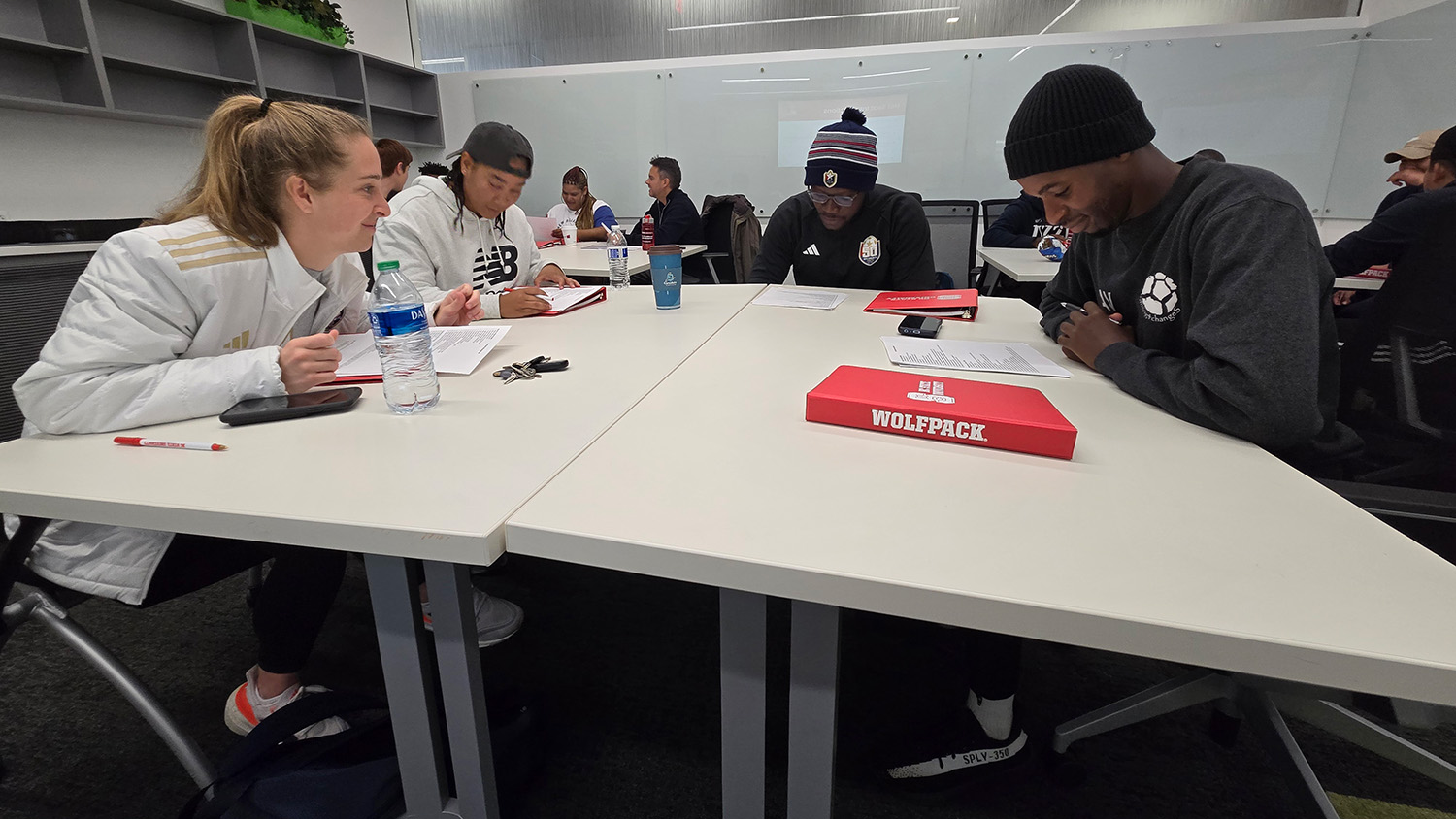NC State Partnership Honors Marines Who Fought in Battle of Belleau Wood

Several members of the NC State Marine Corps Naval ROTC stood outside Reynolds Coliseum in the early morning hours of November 29, 2021, listening to the legacy left behind by the Marines who fought valiantly in the Battle of Belleau Wood during World War 1.
To conclude the ceremony, the ROTC members then assisted Austin Heine, operations manager of NC State’s Cooperative Tree Improvement Program, as he planted an oak sapling. The sapling, and about 90 others, were grown by Heine and his team from acorns gathered at Belleau Wood.
For more than two years, the program’s staff grew the oak saplings in a greenhouse on NC State’s campus. The saplings are now being planted on Marine Corps bases and facilities across the country through March 2022.
“I hope that they will serve as a reminder of all the men that died fighting in that battle,” said Austin Heine, operations manager of the Tree Improvement Program. “I was excited to be on this project because my grandfather, Darwin, was a Marine. I hope that the trees are around for a long time, at least 100 years.”
This project found its way to the NC State College of Natural Resources and the Tree Improvement Program thanks to outreach efforts on the part of Col. John Giltz, the mastermind behind the project. In the fall of 2017, Giltz reached out to Elizabeth Snider, the forest manager at the College of Natural Resources, to see what efforts could be made to make this project a reality. Snider then put him in touch with the Tree Improvement Program.
A year later, representatives from the Marine Corps in France collected a bucketful of acorns to be exported to the United States. But it wasn’t an easy task, according to Glitz, who said it was difficult to contact the embassy to get the acorns to the United States during a time wrought with political strife. And the officer who collected the acorns had to leave France in the spring of 2019, leaving Glitz less hopeful about the prospect of getting the acorns to the U.S.
The Marines are not known to give up easily, however. Later that year, Giltz tried again and was successful in securing the import of 200 acorns into the U.S. Of those acorns, 100 were able to make it through USDA, APHIS and PPQ plant inspection stations and into the care of the Tree Improvement Program by October 2019.
“It really started over 20 years ago with an idea hashed with a fellow marine and myself about bringing back a piece of Belleau Wood,” Giltz said. “We did import a few saplings, but they died because, frankly, we didn’t really know what we were doing. When I came back here on my final tour with the Marine Corps in 2017, I decided that this was something I wanted to see all the way through, but this time with the help of experts, which is where NC State University and the Tree Improvement Program came into the picture. This could not have happened without their support.”
The Battle of Belleau Wood is forever close to the hearts of members of the Marine Corps because of its significance. Marines in the 5th and 6th Regiments played a key role in the Allied victory that drove German forces out of Belleau Wood. Giltz’s unit, part of the 6th Marine Regiment, has a direct connection to that legacy.
“It’s important to note that while the Marine Corps seems to be the service that most highly regards, cherishes, remembers and honors Belleau Wood — and it was a defining moment for our service — we don’t own that legacy alone,” Giltz said. “The legacy belongs to those who fought, and it wasn’t just Marines; there were more Army soldiers than Marines. In fact, some of our units were commanded by Army Officers. And we fought alongside heroic sailors, as we still do today, with many dying saving Marines.”
Since the Belleau Wood acorns arrived at NC State, Heine and his team of six students and four staff members have managed the growth of the oak saplings. Much like humans, the saplings have the genetic makeup of the oak trees that came before them, the ones that survived the Battle of Belleau Wood.
By May 2020, the seedlings stood from six to 12 inches tall and were subsequently transplanted to 7-gallon pots. Today, the trees stand at about four to five feet tall and are expected to reach their potential growth plateau at 60 to 80 feet tall, with an expected lifespan of 100 years.
Some locations the trees will make their way to include Virginia Tech University; Virginia Military Institute; Arlington National Cemetery; the National Museum of the Marine Corps in Quantico, Virginia.; the National Museum of the United States Army in Fort Belvoir, Virginia.; Camp Lejeune in Jacksonville, North Carolina; and Parris Island in South Carolina and San Diego, California.
- Categories:


